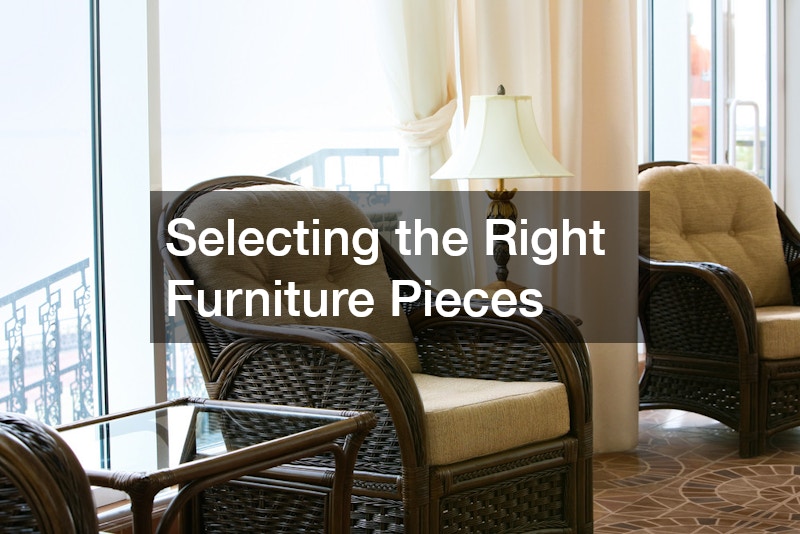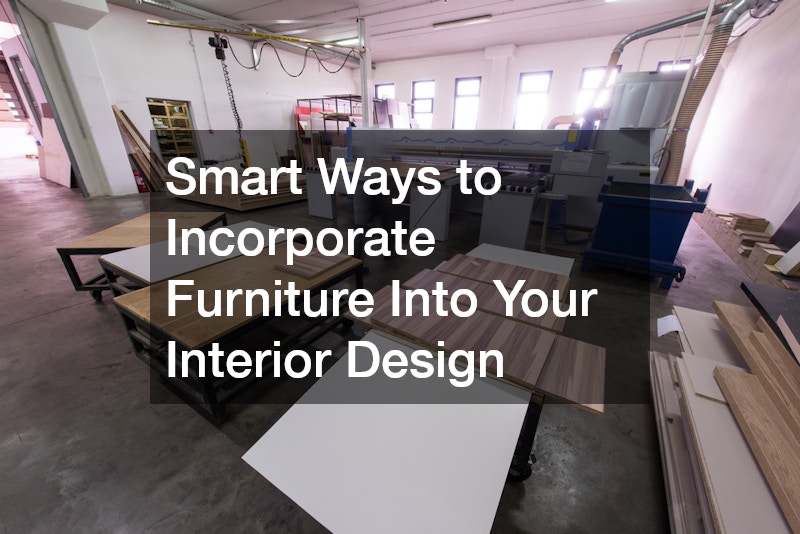Incorporating furniture into your interior design starts with understanding your space and needs. Before purchasing any piece, consider the size and layout of the room to ensure the furniture complements the area’s dimensions. Overcrowding a small space with bulky furniture can make it feel cramped, while under-furnishing a large area can leave it feeling empty. Take precise measurements of your rooms, keeping in mind elements such as windows, doors, and built-in features that can affect furniture placement.
Aside from space, identify the functional needs of each room. Each area in your home serves a different purpose—a dining room focuses on seating and dining activities, while a living room emphasizes relaxation and entertainment.
Choose furniture pieces that enhance these functions. Consider your lifestyle and the specific needs of those who use the space regularly. Families with children might prioritize durable and stain-resistant materials, while a couple without kids might focus on aesthetic appeal.
Think about the flow and movement within your home. Arrange your furniture to facilitate easy navigation and maintain practicality. For instance, leaving sufficient space between a sofa and coffee table ensures comfort and accessibility. Pay attention to natural light and how it interacts with different types of furniture. The arrangement should allow for comfort and ease, making the space feel inviting and well thought-out. Consulting with furniture companies can provide valuable insights into optimizing design and functionality.
Selecting the Right Furniture Pieces

Once you’ve considered your space and needs, the next step is selecting the right furniture pieces. Begin with core items, such as sofas, beds, tables, and chairs—essential elements that establish the room’s foundation. Look for pieces that resonate with your personal style, whether it be contemporary, minimalist, traditional, or eclectic. Harmonizing your furniture with the overall design theme of your home ensures a cohesive look and feel.
Quality should be a top priority when selecting furniture. Investing in well-crafted pieces guarantees longevity and reduces the need for frequent replacements. Consider materials that not only complement your design aesthetic but also fit your everyday use. For example, woods like oak or walnut offer durability and timeless appeal, while materials such as glass or metal can contribute to a modern and sleek look. Don’t forget to examine the finishes, upholstery, and craftsmanship of each item.
Think about versatility and flexibility in your furniture selections. Multifunctional pieces, such as a sofa bed or an extendable dining table, can adapt to changing needs and maximize space utility. Modular furniture systems allow you to customize pieces to fit specific areas or needs. These choices provide room for creativity and ensure the space remains practical and adaptable over time. Reaching out to furniture companies can also present innovative solutions tailored to your preferences, enhancing both functionality and aesthetics.
Balancing Aesthetics and Functionality
Achieving a balance between aesthetics and functionality is crucial in successful interior design. Even the most stylish piece of furniture can fall flat if it doesn’t serve its intended purpose effectively. Start by defining the primary function of the room and ensuring every piece of furniture supports that purpose. Choose designs that complement the architecture and overall décor without compromising on comfort or usability. The design should not only be visually appealing but also enhance the room’s functionality.
Consider the role that color and texture play in overall design and atmosphere. The color of your furniture can significantly impact the mood of the space—neutral tones can convey calmness and serenity, while bold hues can provide energy and vibrancy. Mixing different textures, such as combining a sleek leather sofa with a vintage wooden coffee table, adds depth and interest. Ensure that the colors, textures, and styles are balanced so they do not overwhelm or clash with each other.
Integrating Technology and Modern Conveniences
In today’s homes, furniture isn’t just about style and comfort—it can also incorporate technology to enhance convenience and lifestyle. Consider furniture with built-in charging stations, smart lighting, or hidden storage compartments that support modern living without cluttering your space. Entertainment units can be designed to accommodate large screens, speakers, and streaming devices while maintaining a clean, organized appearance. Even work-from-home setups benefit from ergonomic desks and chairs that combine functionality with design. Collaborating with furniture companies that specialize in tech-integrated solutions can help you seamlessly blend innovation with aesthetics, creating spaces that are both beautiful and highly functional.
The strategic use of accessories can elevate the visual appeal of your furniture and tie the room together. Incorporating pillows, rugs, and decorative items can enhance the design narrative of your living space. These elements can reflect personal tastes while complementing the larger furniture pieces. Maintain harmony by selecting accessories that echo the design theme and color scheme. Ultimately, the goal is to create an environment where furniture seamlessly integrates into the design, supporting both form and function.



